What’s New?
- 4 June 2020 – Assignees appointed in terms of Agricultural Product Standards Act 1990
- 29 October 2019 – Regulation of Wood Packaging Material in International Trade
The Department of Agriculture, Forestry and Fisheries (DAFF) have requested SARS to inform exporters, importers and all other role players involved in the international trading of products involving wood-packaging material, to comply with International Standards for Phytosanitary Measures (ISPM) No. 15. For more info, see Regulation of Wood Packaging Material in International Trade and A call for compliant Wood Packaging Material in International Trade. - 25 June 2019 – Managing Prohibited and Restricted Goods
Based on a number of queries received in recent months from external stakeholders, it became evident that the P&R List is not up to date. Read more.
What are Prohibited and Restricted goods?
The main difference between prohibitions and restrictions is that:
- prohibited goods are never allowed to enter or exit South Africa under any circumstances
- restricted goods are allowed to enter or exit South Africa only in certain circumstances or under certain conditions, for example on production of a permit, certificate or letter of authority from the relevant government department, institution or body.
SARS administers certain prohibitions or restrictions in terms of section 113(8)(a) of the Customs and Excise Act, 1964 on behalf of a number of government departments, institutions or bodies, for example the Department of Agriculture, Forestry and Fisheries, National Regulator for Compulsory Specifications (NRCS), the South African Reserve Bank (SARB), to name a few.
Prohibitions and restrictions are not limited to goods carried by travellers, but are applicable on all modalities of transport (road, rail, air, sea, post or other). This means that products subject to any prohibitions or restrictions will be subject to those no matter in what form of package or packaging they are imported or exported.
In addition to the prohibitions and restrictions, the status of the goods must also be declared as follows:
- N for new goods;
- U for used goods; and
- S must be used for second hand goods.
The prohibitions and restrictions from all different government departments, institutions or bodies are incorporated in the Consolidated List of Prohibited and Restricted Imports and Exports, which is supplied here for ease of reference. The list is categorised according to the tariff structure of the Harmonised Commodity Coding and Description System – commonly known as the HS Tariff or Tariff Book whereby goods are classified upon importation or exportation:
Counterfeit goods
One of the main purposes of the Counterfeit Goods Act, 1997 (Act No. 37 of 1997) is to prevent the release of counterfeit goods into the local market of South Africa. SARS officials may, in terms of section 113A of the Customs and Excise Act, 1964, detain any goods upon importation into South Africa to ascertain whether the goods are indeed counterfeit goods as contemplated in the Counterfeit Goods Act, 1997. These actions are carried out on behalf of the Department of Trade and Industry under whose authority the Counterfeit Goods Act, 1997 is administered (as provided for in section 15(1) of the Counterfeit Goods Act, 1997). The following actions or goods are prohibited and will be included in ascertaining whether actions/goods are complying with the requirements contemplated in the Counterfeit Goods Act, 1997 or not:
- Being in possession of or having control over counterfeit goods for the purpose of dealing therein;
- Manufacturing, producing or making of counterfeit goods, including the keeping, storing or packing thereof, other than for private and domestic use;
- Counterfeit goods being exposed for sale or being sold, hired out, bartered or exchanged;
- Counterfeit goods being exhibited in public for purposes of trade;
- Counterfeit goods being distributed for trade or other purposes;
- Counterfeit goods being imported into or through or exported from South Africa; or
- The act of dealing in counterfeit or suspected counterfeit goods.
Section 15(1) of the Counterfeit Goods Act, 1997 entitles an owner of intellectual property to apply to the SARS Commissioner to seize and detain goods incorporating specific intellectual property rights during a particular period and calculate the infringement that might exist in terms thereof, or assist with the protection of that right for that period. This application is referred to as a Section 15 Application and must be forwarded to the National Coordinator: Counterfeit Goods, Lehae La SARS, 299 Bronkhorst Street, Nieuw Muckleneuk, Pretoria, or Private Bag X923, Pretoria, 0001 for consideration. Intellectual property rights are defined in section 1 of the Counterfeit Goods Act, 1997 and include goods containing trademarks, copyright or specific marks regulated under the Trade Marks Act, 1993, the Copyright Act, 1978 or the Merchandise Marks Act, 1941, respectively.
To access this page in different languages click on the links below:



